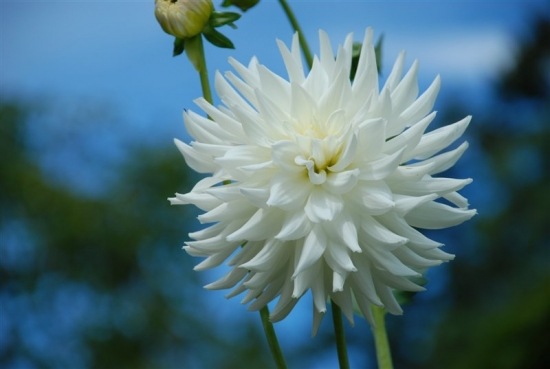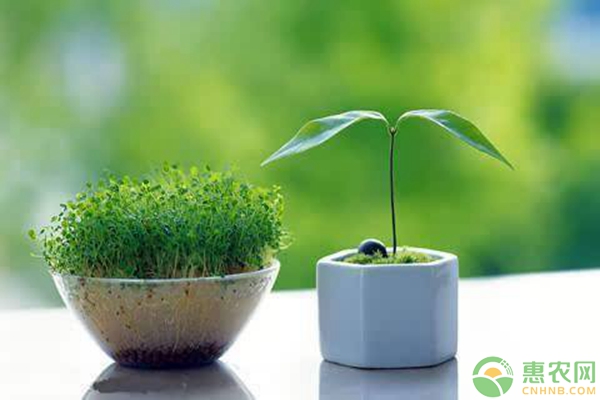Which kinds of flower reproduction are there?
The methods of flower reproduction can be divided into four categories: sexual reproduction, asexual reproduction, unisexual reproduction and tissue culture reproduction. Sexual reproduction is also called seed reproduction. It is through the role of the female and male organs of the flower, that is, the combination of pollen and ovules to form seeds, which are used to reproduce.
The seedlings produced by seeds have strong root system, favorable absorption of water and nutrients, strong growth and development, long life span, strong adaptability to adverse environment, and are easy to mutate and produce new varieties in the natural hybridization between varieties. often used in herbaceous flowers. Woody flowers rarely use seeds to reproduce, mainly because sexual reproduction blossoms late and can not maintain the excellent characteristics of the mother.
Asexual reproduction is also called vegetative reproduction. It is a method of cultivating new plants by using the roots and stems of the vegetative organs of flowers. The common methods of asexual reproduction are ramet, cuttage, striping and grafting. It has the advantages of fast seedling formation and early flowering, and can maintain the excellent characters of the female parent. However, no main root was formed, and the root system was distributed shallowly in the soil.
In unisexual reproduction, fern flowers have no bisexual reproductive organs. in addition to the method of ramet reproduction, unisexual reproduction can be carried out by using spores from the back of their leaves.
Tissue culture and propagation is that the tissues or cells of flowers are inoculated into a certain medium under aseptic conditions, and then cultured and induced to differentiate and regenerate into independent plants. The new plants obtained carry all the genetic information of the mother, because the plant cells have a kind of "totipotency" in physiology and development. Tissue culture is the use of plant somatic cell reproduction to obtain offspring, like cutting propagation, unfertilized sex cells to reproduce.
What are the types of flower reproduction?

Flowers and plants
The types of flower reproduction are:
① propagates sexually. Also known as seed propagation, that is, sowing and raising seedlings with seeds.
Asexual reproduction of ②. Also known as vegetative reproduction, is the use of flower plant nutrients, that is, roots, stems, leaves, buds for reproduction to obtain new plants (such as meristem, cutting, striping, grafting, etc.).
③ spores reproduce. Also known as unisexual reproduction, is limited to the reproduction of ferns.
④ tissue culture and propagation. Also known as micropropagation, a certain part of the cell, tissue or organ of a flower plant is inoculated on a certain medium under aseptic conditions to obtain new plants.
What are the forms of flower reproduction
There are two kinds of flower reproduction: sexual reproduction and asexual reproduction.
Sexual reproduction: the method of seed reproduction in which plants are cultivated by sowing seeds. Most of the grass flowers in 2012 are propagated in this way. The time of sowing is: annual grass flowers in spring from March to April, biennial grass flowers in the first autumn from August to October. The methods of sowing include sowing, strip sowing and on demand.
Asexual reproduction: that is, vegetative reproduction. It is an independent new plant which is cultivated artificially by using the vegetative organs such as roots, stems and leaves of flowers. Asexual reproduction can maintain the excellent characteristics of the female parent, advance and shorten the time of plant formation and flowering and fruiting. The vast majority of woody flowers propagate their seedlings by asexual reproduction. Asexual reproduction can be divided into four forms: plant propagation, cutting propagation, striping propagation and grafting propagation.
- Prev

Why don't sweet-scented osmanthus trees bloom?
Why don't sweet-scented osmanthus trees bloom? The main reason for the failure of home-grown osmanthus to blossom: when ① was transplanted, too many roots were hurt, and the vitality was not fully restored, resulting in poor growth and no flowering. The soil planted in ② should be loose and acidic and should be planted in a high dry place with good drainage. If you plant it in low-lying areas,
- Next

How to sow and reproduce flowers?
Most of the sowing time is in spring and autumn, usually from February to April and from August to October in autumn. Annual flowers are mostly carried out from April to May in spring, and biennial flowers are mostly carried out from August to September in autumn. Most families use pot sowing, and if possible, they can also sow in the open field, on demand or strip sowing, and transplant after emergence.
Related
- Fuxing push coffee new agricultural production and marketing class: lack of small-scale processing plants
- Jujube rice field leisure farm deep ploughing Yilan for five years to create a space for organic food and play
- Nongyu Farm-A trial of organic papaya for brave women with advanced technology
- Four points for attention in the prevention and control of diseases and insect pests of edible fungi
- How to add nutrient solution to Edible Fungi
- Is there any good way to control edible fungus mites?
- Open Inoculation Technology of Edible Fungi
- Is there any clever way to use fertilizer for edible fungus in winter?
- What agents are used to kill the pathogens of edible fungi in the mushroom shed?
- Rapid drying of Edible Fungi

